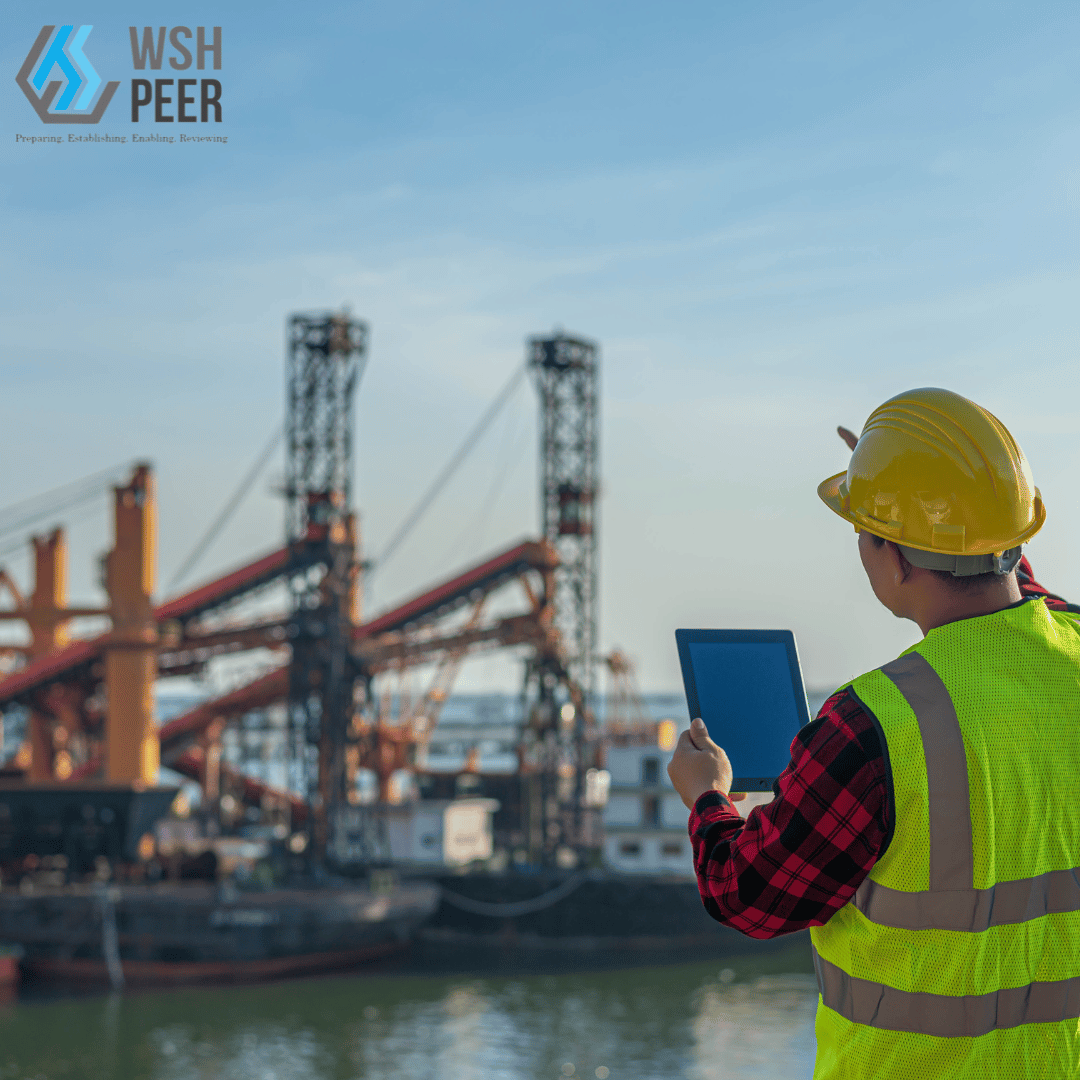When we think about the marine industry, it’s easy to picture vast oceans, powerful ships, and offshore rigs. But behind the scenes, there’s a lot more going on, especially when it comes to keeping everyone safe. The marine industry is not just about navigating waters; it’s about navigating the unique challenges that come with working in one of the most hazardous environments. This article takes a closer look at these challenges and shares some practical tips on how to enhance safety for all—from HSSE professionals to project owners and main contractors.
Understanding the Unique Safety Challenges in the Marine Industry
Working in the marine industry isn’t your typical nine-to-five job. It involves a variety of activities like shipping, offshore oil and gas operations, fishing, and port work. Each of these areas comes with its own set of safety challenges that can’t be ignored.
1. Harsh Working Conditions
Marine workers often have to deal with extreme weather conditions, rough seas, and unpredictable temperatures. These elements can increase the risk of accidents, such as slips, trips, falls, and even falling overboard. Plus, the stress of working under such conditions can lead to fatigue, which is a major factor in many accidents. The International Maritime Organization (IMO) notes that fatigue contributes to about 60% of incidents at sea IMO, 2021.
2. Complex and Dynamic Work Environments
Marine environments are constantly changing. Ships and offshore platforms are always in motion, making balance and stability a constant challenge. On top of that, there’s complex machinery and equipment to operate, which can lead to equipment failure or accidents if not handled properly. According to the Marine Accident Investigation Branch (MAIB), mechanical issues are a significant cause of accidents in this industry.
3. Exposure to Hazardous Materials
Working in the marine industry often means handling hazardous materials like chemicals, fuels, and other toxic substances. Without proper safety measures, these can lead to spills, leaks, and even fires, posing risks to both workers and the environment. The Occupational Safety and Health Administration (OSHA) has specific guidelines for managing these materials safely to prevent accidents
4. Limited Access to Medical Assistance
Unlike jobs on land, marine workers don’t have the luxury of immediate medical help. In case of a serious injury or medical emergency, getting to a healthcare facility can take time, and in some cases, time is critical. That’s why the World Health Organization (WHO) emphasizes the importance of having medical training and first aid supplies on board.
Best Practices for Enhancing Safety in the Marine Industry
Given these challenges, how can we make sure everyone stays safe? Here are some best practices that can make a real difference:
1. Develop a Robust Safety Management System (SMS)
A Safety Management System (SMS) is like a game plan for managing safety risks. It includes everything from organizational structures to policies and procedures. A strong SMS covers all aspects of marine operations, from regular maintenance checks to emergency responses. It involves:
- Risk Assessment and Mitigation: Regularly checking for potential hazards and figuring out how to minimize them.
- Incident Reporting and Investigation: Encouraging everyone to report incidents and conducting thorough investigations to learn and improve.
- Continuous Improvement: Constantly reviewing and updating safety measures to stay ahead of potential risks. The International Labour Organization (ILO) points out that a strong SMS is key to reducing workplace injuries
2. Invest in Training and Competency Development
Training is one of the best ways to prevent accidents and build a culture where safety comes first. It’s important to invest in ongoing training for all employees, from new hires to seasoned professionals. Effective training programs should include:
- Safety Drills and Exercises: Regularly practicing drills for emergencies like fires, man overboard situations, and medical issues.
- Hazardous Material Handling: Teaching workers how to safely handle, store, and dispose of hazardous materials.
- Use of Personal Protective Equipment (PPE): Ensuring everyone knows how to properly use and maintain their PPE, like life jackets, helmets, gloves, and respirators. A report by the Center for Maritime Safety and Health Studies (CMSHS) shows that regular training can cut incident rates by up to 40%
3. Leverage Technology for Safety Monitoring and Compliance
Technology can play a huge role in improving safety on the water. Some innovative technologies being used in the marine industry include:
- Wearable Devices: Smart wearables that monitor vital signs, detect fatigue, and alert workers of potential dangers.
- Remote Monitoring Systems: Sensors and IoT devices that keep an eye on equipment conditions and spot problems before they turn into accidents.
- Digital Safety Platforms: Platforms like PEER offer digital checklists, real-time reporting, and safety performance tracking, helping organizations stay on top of safety management. According to the American Bureau of Shipping (ABS), using digital tools can reduce workplace accidents by up to 50%.
4. Foster a Safety-First Culture
Creating a culture where safety is always the top priority is crucial. This culture should start from the top, with management leading by example. Some strategies to foster this culture include:
- Leadership Commitment: Leaders should be visibly committed to safety, participating in programs, and following all safety protocols.
- Employee Engagement: Getting workers involved in safety committees and asking for their feedback on safety practices.
- Recognition and Reward Systems: Implementing programs that reward safe behaviors and practices. The National Safety Council (NSC) highlights that a strong safety culture can improve overall safety performance.
5. Ensure Compliance with International Safety Standards
Staying compliant with international safety standards like the International Safety Management (ISM) Code, International Maritime Organization (IMO) guidelines, and Occupational Safety and Health Administration (OSHA) regulations is a must. Regular audits and inspections help ensure compliance and identify areas for improvement. The International Transport Workers’ Federation (ITF) reports that adhering to these standards can significantly lower the risk of accidents
Addressing Psychological Safety in the Marine Industry
While we often focus on physical safety, psychological safety is just as important. The isolation, long hours, and high-pressure environment can take a toll on workers’ mental health. It’s important to:
- Provide Mental Health Support: Offer access to counseling services and mental health resources.
- Promote Work-Life Balance: Implement policies that allow for rest and relaxation, such as regulated working hours and adequate leave.
- Encourage Open Communication: Create an environment where workers feel safe discussing mental health concerns without fear of stigma. Marine Insight suggests that fostering psychological safety is essential for both well-being and performance..
As the marine industry continues to evolve, so too must our approach to safety. By understanding the unique challenges, investing in robust safety management systems, leveraging technology, fostering a safety-first culture, and ensuring compliance with international standards, we can create safer work environments. For HSSE professionals, project owners, main contractors, and all stakeholders, this means not only protecting the workforce but also boosting operational efficiency and compliance.
Looking ahead, prioritizing workplace safety in the marine industry isn’t just about following regulations—it’s about doing what’s right for our people. By taking proactive steps today, we can ensure a safer tomorrow for everyone working in this vital industry.



